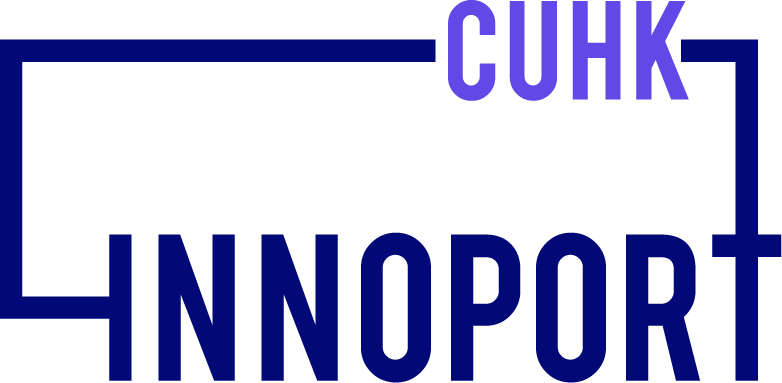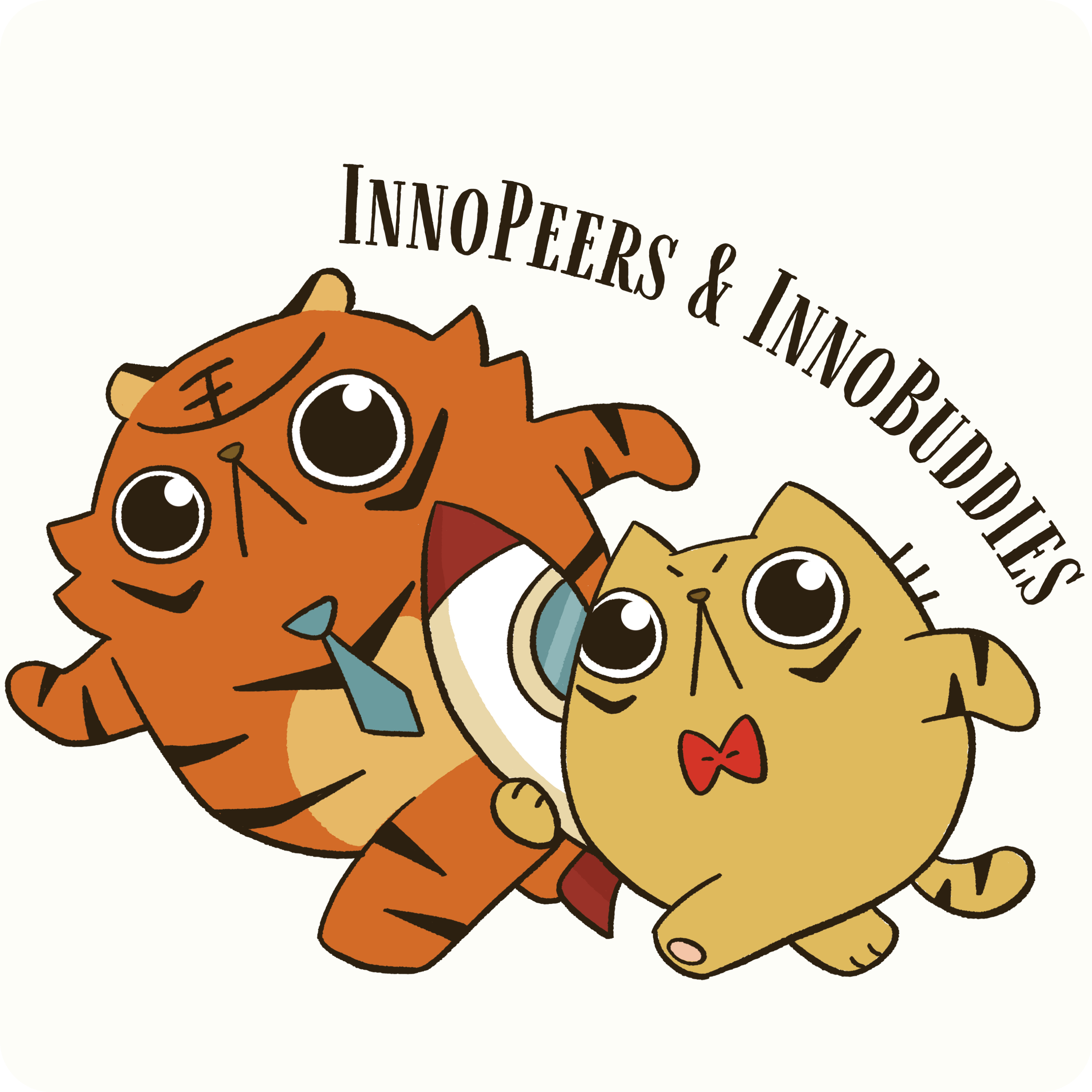“I’ve got certain capabilities in performing…I think?” Since six years ago, physics KOL Dr Tong Shiu Sing has starred in over 60 episodes of Sidewalk Scientist, a popsci TV show. Having unleashed his potential in acting, he, by chance, realised his childhood dream of becoming a star in popular science – just like American astronomer Carl Sagan.
“I wasn’t born this way, it’s years of cultivation. When you’re nerdy to the extreme, these abilities stay bottled up.” In front of a gigantic Einstein poster, he shares his personal “formula of growth” with a stern look.
Dr Tong is Senior Lecturer at CUHK’s Department of Physics. Besides teaching, he’s known for making public appearances at events, giving school talks, and sitting on judging panels of innovation and technology competitions of all sizes, “ranging from primary, secondary schools, to university level!” Catching sight of the drawbacks of local STEM education, he hopes to shake up our “instant culture”, by getting CUHK’s Knowledge Transfer Project Fund (KPF), for example. Via the scheme, he initiated a learning programme of seminars, experiments and experiential activities, through which secondary school students grasp the relationship between basic sciences and technology.
Shall we begin with his childhood fantasy?
“A nerd’s fantasy”
Sat before us is a CUHK-er from head to toe – since making it into the University’s physics programme through the Early Admissions Scheme, he studied all the way to PhD and stayed to teach to date. Of every possible discipline, why physics?
Dr Tong, having spent his youth in all-male primary and secondary schools, reveals his zest for astronomy. “The universe and its stars are like Gundam models – both a nerd’s fantasy.” (By the way, electric vehicle company Tesla’s Founder Elon Musk also studied physics.)
“Didn’t have as many choices back in my days, the course of study most relevant to astronomy is physics. How do stars evolve, how do they become black holes – that’s physics, that’s relativity, that’s Einstein! As a child, I already found these fascinating.” He started poring over astronomy books, stargazing, even running a joint-school astronomy club, both to quench his thirst for the subject and his desire to “show-off”. “Teachers often called on me to present, I did feel proud.”
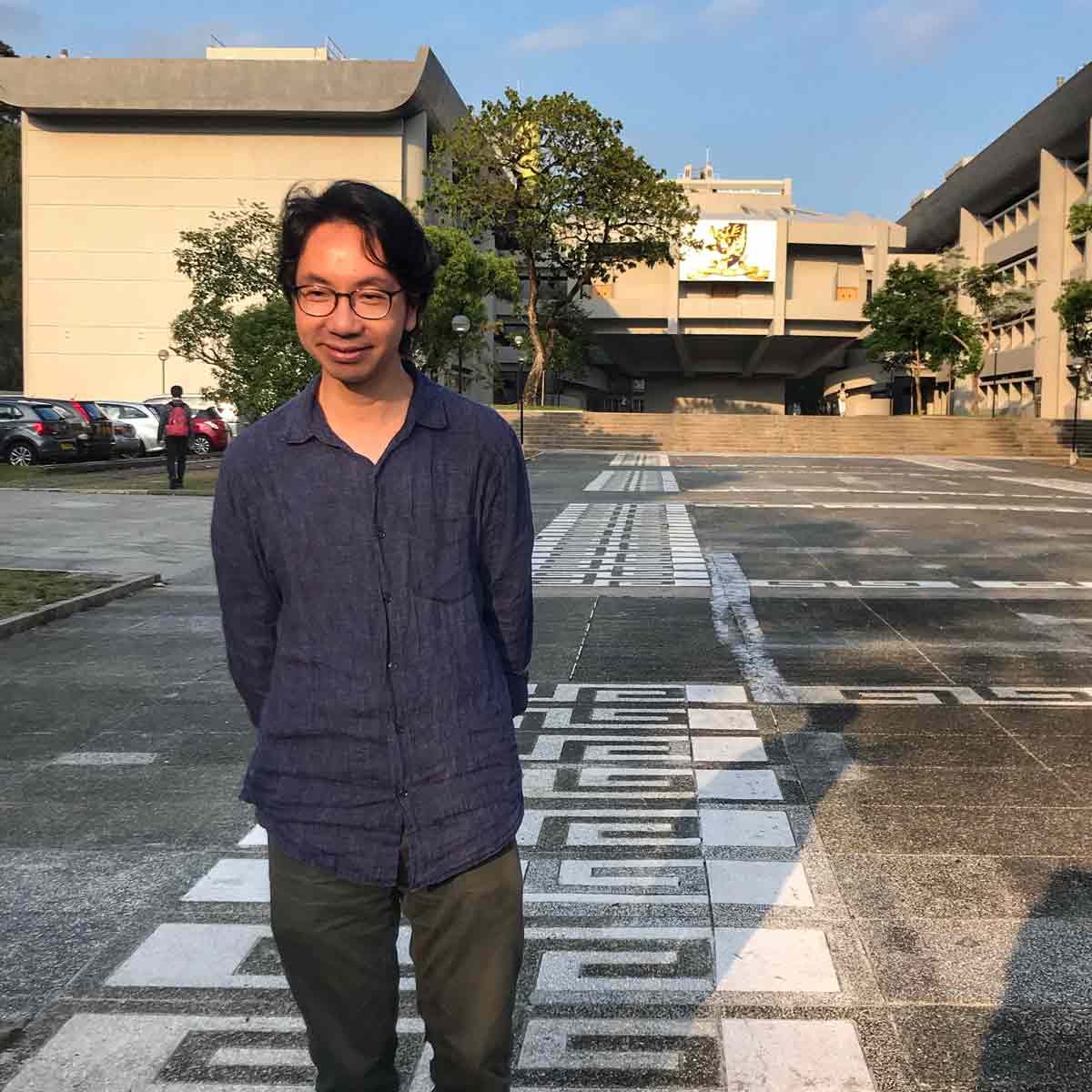
The day before our interview, we ran into Dr Tong strolling along the University Mall, the setting sun lighting up his face. (Photo: ORKTS)
Growing up in a school where females were a scarce resource (“we only had one female teacher”), he jokes about thinking joint-school events open up chances for romance. Unfortunately, the astronomy club reeked of “academic” vibes, and was not nearly as popular amongst girls as social services. Still, he meant business, taking the position of chairperson on top of giving his all at competitions, “entered the Space Museum’s astronomy quiz competition, won first runner-up in the open category once!”
Skipping A-levels, Dr Tong went straight to CUHK after Form Six. What set him apart from his peers? “During high school, I asked my sister (a university student then) to borrow for me books on relativity, not able to grasp it all, of course. After my HKCEEs, I buried myself in my brother’s physics books – he did mathematics, didn’t understand those.” It was then he decided to devote himself to academic research. What did he eventually investigate? We try asking for an everyday explanation.
“Dunno how to do experiments”
“I’m a theorist. My PhD thesis concerns wave motions of open systems, meaning they are half-closed. There’s stuff flowing out of it. One end of the string’s tight, the other loose, connected to another string outside, with an outflow of waves. I worked on the mathematical theories behind such leaky systems. This is the realm of theoretical physics, so truth be told, I don’t know much about experimenting. lol” Well, how much of that did you get?
Despite his claim, he often performs physics experiments on TV. While he confidently claims to “possess some talent in acting”, he emphasises that it comes from years of practice, “to unravel and attempt at it, calibrating based on unsuccessful instances – that takes time.”
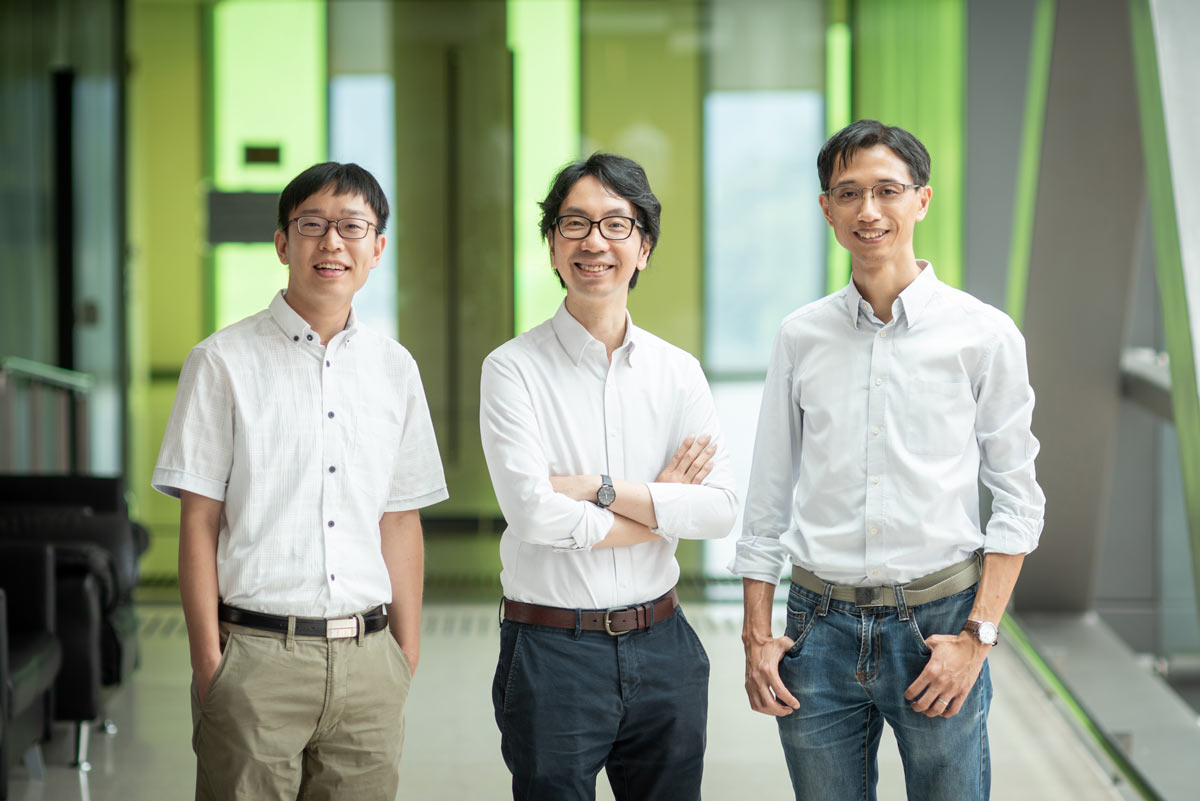
Discover thyself through a PhD
Whereas the degree could be summarised in a few sentences, he unfurls his rock bottom in the process. “I was stuck for half a year, couldn’t figure out how to proceed. As I wondered if carrying on like this was the only option, I took the opportunity to learn about my own strengths. PhD is tough. In the field of theoretical physics, I could be the top 5%, but definitely not the geniuses at the top 1% or 0.5%. I also realised I’m not geared for drilling on a question for a long time, but seem to teach well instead.” Eventually, he decided to focus on teaching, relieving himself of the strains from research.
When every aspect of his life – academically, relationally and religiously – went wrong, he embarked on a unique journey to healing – taking calls at a suicide prevention organisation. “Talked to people in terrible conditions, people with mental illnesses. I guess subconsciously, the one I wanted to reach out to was myself; how my mental state was like, what kind of person I was. Sometimes after a call, I questioned if I brought my self into the conversation.”
Years later, he volunteered at a hospital’s convalescence ward, “met many nearing their ends; cancer patients, elderly people… I vividly remember coming out of the elevator, one side lay the room where I changed into my uniform, the other led all the way to the mortuary. It was heavy. But the experiences sharpened my understanding of human reactions, personalities and emotions, thus sensitivity to human nature, for life.”
Besides volunteer work, he found consolation in the early works of Haruki Murakami. “Who told you?!” He reacts quite strongly at the mention of this name, forgetting that he divulged that to a media outlet some time ago. “Why Murakami? Well, he’s known for Nihilism. A classmate once remarked, ‘Murakami’s elegance is an unbearable lightness’. I pondered about this for quite a while… He’s got a melancholy tone, often evoking loneliness and vanity in cities. At that age (as a uni student), I had to cope with a few too many problems, and I resonated with his work.”
He counted a few burnt on his mind, “lining them up, it’s almost like observing someone’s journey. Hear the Wind Sing describes his youth; A Wild Sheep Chase tells of his attempt at self-discovery; in Dance Dance Dance he’s grown into a diplomatic middle-aged, who rediscovers himself as he connects with kids.”
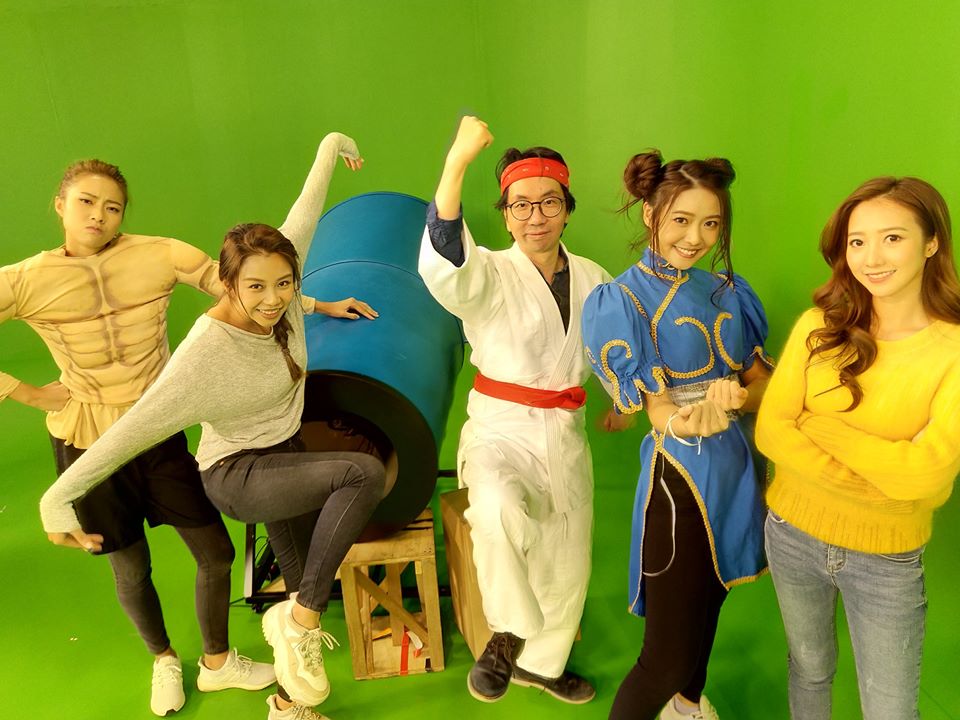
Turning points
His life has been more or less “stationary” until six years ago, when Sidewalk Scientist’s invitation arrived and stirred things up. “It was huge for me. Had the privilege to try loads of weird stuff.” From schools to communities and shopping malls, he held talks, hosted games and activities, officiated graduations – all of which revolved around STEM education. Contrary to his comedic façade on the screen, Dr Tong looks dead serious throughout our interview. He admits having modelled himself on American physicist-“prankster” Richard Feynman.
“I love how he (Feynman) expresses himself. He’s a weirdo, full of peculiar thoughts, vulgar and down-to-earth. He swears too.” He so describes the Nobel Prize winner.
“He finds pleasure in tricking people, Surely You’re Joking, Mr Feynman! (Adventures of a Curious Character) is entirely dedicated to how he pranks others. He brought this world countless inspirations – on the world itself, the authenticity of physics, the significance of science to modern society. He wouldn’t have drawn the masses’ attention were it not for his ways.”
He credits Feynman’s ingenious methods; alas, in our “age of attention deficit”, much effort is needed to sell hard science. He makes it plain that Hong Kong’s culture of impatience is so deep-rooted that innovation education hasn’t been given much thought to. “Ever in a hurry, everything needs to be rushed through.” His strategy to science popularisation is to first draw the public’s attention, then guiding adolescents genuinely interested in science to delve further in the field.

What’s wrong with our STEM education?
STEM (Science, Technology, Engineering and Mathematics) is a hot trend in recent years, in the hope of supporting the development of innovation and technology industries in the long run. Truth is, Hong Kong’s performance in a key indicator – innovation capability – has been dissatisfactory. In the Global Competitiveness Report 2019 released by the World Economic Forum, our city came in second runner-up. Yet, our major weakness laid bare before the entire planet (Hong Kong ranked 26 in terms of innovation capability, and 23 in 2010, indicating a dip in performance within this decade). Dr Tong makes the following observation.
“We give weight to results. Schools and teachers alike enjoy press coverage, and expect creations to happen soon. As a result, students often focus on how to utilise tools available (such as electronic sensors), rather than how to solve issues with scientific methods – for instance, is automatic control effective? Does it really solve the problem, or would it just be gilding the lily? The first step should have been considering where the need is and constructing a solution, then comes the step of technically realising it. What’s the use of being a copycat?” He outlines the “chaos” in local STEM education.
A recipient of multiple teaching awards himself, Dr Tong is adept at teaching using everyday occasions. A while back, he designed a programme for Ocean Park; teachers would take students on rides while learning physics. More recently, he initiated a stepped learning programme, taking secondary schoolers to a company at Science Park to gain an understanding of magnetic resonance imaging (MRI), and even more, “the amazing achievements that bore fruit from the interactions among science, engineering and technology, and the impacts thus made on our lives”. He deems it of utmost importance to pique the interest and imagination of students, encouraging them to explore the scientific problems behind.
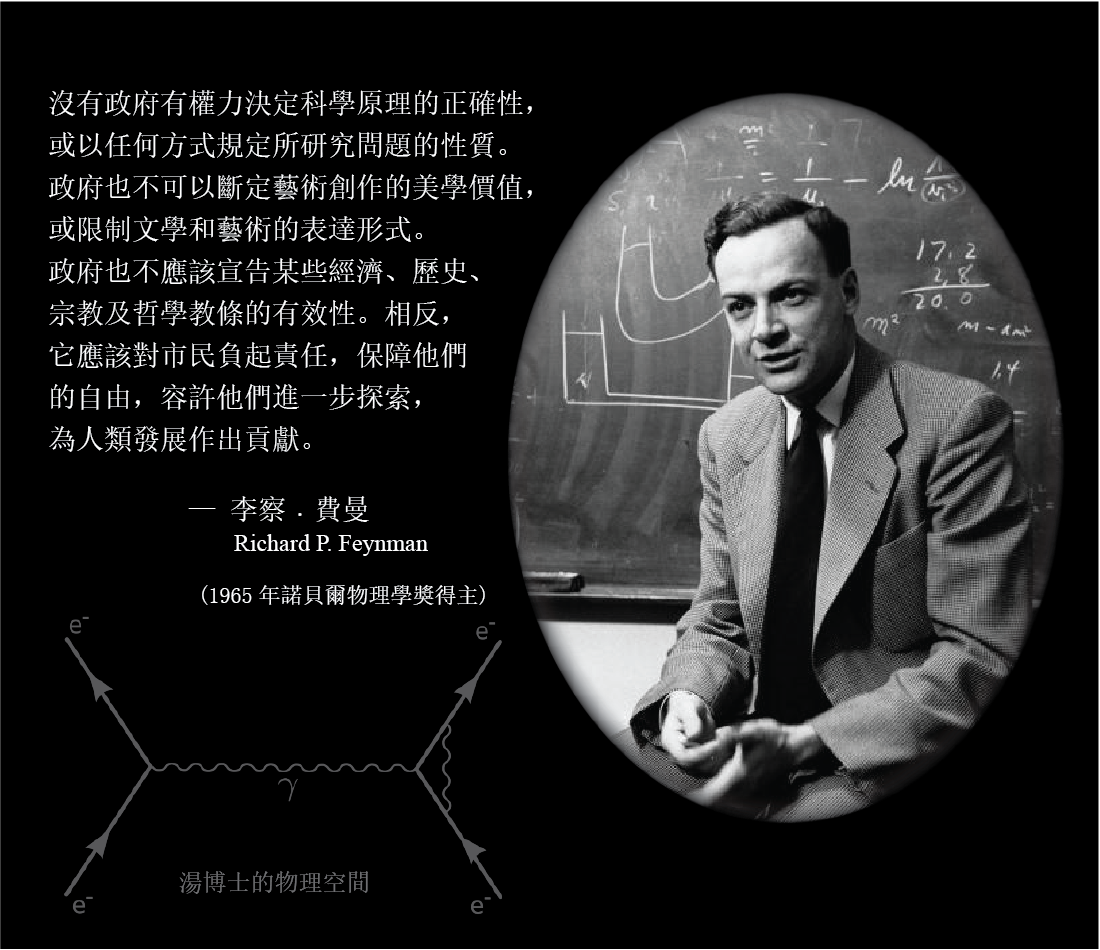
Sending words to the current generation
In the midst of a worsening social environment, he doesn’t shy away from responding to cardinal issues on his Facebook page. Lately, he borrowed Feynman’s saying to remind those in power the significance of safeguarding academic freedom, and encouraging citizens to inquire and explore. When the government started distributing CuMasks (which invited much criticism), Dr Tong not only aired his views to the media, but also personally examined the mask with an electron microscope. He later published on his page an objective evaluation of the mask’s effectiveness, amid the overwhelming prejudice, side-taking and emotions on social media.
To the youngsters who feel trapped in the city, he draws on his father’s experience as a word of encouragement, “when there comes a moment, when you feel there are things you just can’t overcome, forcing yourself through would only cause injuries and make things even harder for yourself later. Hold back that step for now, and let it be. That’s not to say give it up. Equip yourself, polish your skills, attain another level, then go help the world.” He confesses to having himself convinced he could never achieve certain things, only later he did. “Take the long view,” his eyes earnest.
【Scholarly keyword】Capillary flow
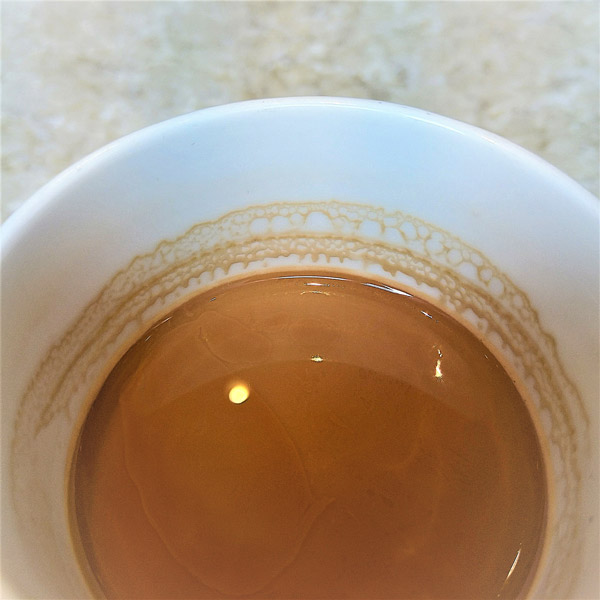
Dr Tong noticed his cup of milk tea forming ringed patterns along the inside, and took a pic. (Photo: Dr Tong)
Doing silly stuff seriously can be a source of happiness – ask the expert Dr Tong.
“I was having milk tea in a restaurant the other day, noting that when my drink evaporates at the surface, capillary action draws the liquid flow. Solid particles are brought to the edge of each tea droplet, forming holed patterns (corresponding to outlines of the droplets) [1]. Another interesting phenomenon is that when a drop of milk splashes into hot tea, the milk droplet occasionally levitates for one or two seconds due to the rising vapour, bounces then fuses into the tea. It’s really intriguing, I’ve witnessed it before.” These daily-life physical phenomena may seem boring, but do inspire physicists to make the next major discovery.
Reference
[1] R. D. Deegan, O. Bakajin, T. F. Dupont, G. Huber, S. R. Nagel, and T. A. Witten, Nature (London) 389, 827 (1997).
By Kary Wong@ORKTS
English translation by Cathy Wong@ORKTS
***
One email to feed you the hottest info from the social innovation universe!
Subscribe to Cubic Zine!
***
#WhereIdeasRootAndFlourish

